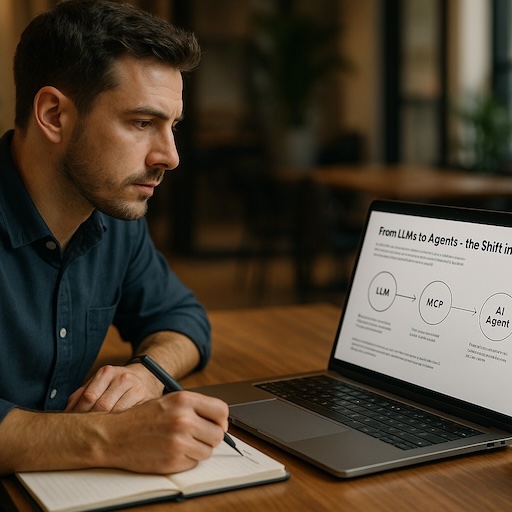10 Easy Ways Conference Speakers Can Improve Their Sessions
I had the privilege of presenting a workshop at a huge Austin-based conference in March 2016. Of course I sat in on many talks and learned from them all. This particular conference attracts experienced industry leaders from all over the world.
I started really paying attention to the talks wondering, “How can our favorite speakers be even better the next time they present?”
Below are 10 concrete tips that will help make your next speaking engagement amazing!
10 Easy Ways To Improve Your Next Speaking Engagement
- Bring your MacBook dongle to connect to HDMI or VGA projectors. With those you can casually hook up your laptop, relax, and glide into your talk.
- Begin with a good story engaging us with what you showed up to teach. Starting off reviewing you bio can be boring.
- Show the URL to your slides in the first 5 minutes. Otherwise we’ll furiously take notes and fumble for our cameras.Put the slide link at the end of your presentation too!
- Turn your entire body when you glance at the screen and speak. Moving that way ensures we don’t loose your voice as your head turns away from your lapel mic.
- Don’t make jokes if your audience isn’t prepared to laugh. Sometimes we just want to learn the facts from a professional. When you do try humor don’t be disappointed if we don’t laugh at your funniest lines.
- Drink a sip of water during a natural pause advancing to a slide. It’s better if you keep us occupied scanning it while you’re taking care of your dry throat. Avoid crinkling your plastic bottle from a strong grip because the lapel mic pics up that noise.
- Avoid asking the audience to “raise your hand if …” over and over because it’s not as engaging as you think. It becomes boring and ineffective sooner than you guess.
- Avoid showing a slide with a big block of text. However, when you do put up a wall of words, offer us a few beats to quickly scan it. Don’t read it to us, but instead give context around its significance.
- Stop when you’re done and let us know you’re finished. Allow us to clap for you celebrating your success. Don’t immediately drop awkwardly into Q&A.
- Focus audience members during Q&A. They’re excited, not prepared to speak, and often ramble. Jump in helping them frame their inquiry. Learn from the best – radio talk show hosts.
BONUS!!! Top Tips from Strangers
Walking around the big show I chatted with fellow attendees. Specifically asking them about their favorite talks of the day. Who made them excited about a new idea? How did the speakers create interest? What was memorable?
This was a chance to learn what my peers want from speakers. I was tricking people into teaching me! You know me from my articles on this blog – I’m just a coder. Public speaking is a skill I’m trying to learn. I straight up asked them, “If you could give advice to the speakers you saw, to make them even better the next time they speak, what would you say?”
Captured below are summaries of attendees’ insights that impressed me the most. Because there was a strong reaction, actionable outcomes, and came up repeatedly. Whenever possible I captured how they felt when a speaker didn’t deliver up to expectations.
6 Bonus Items From Fellow Audience Members
- Don’t be so “pitchy.” One audience member observed speakers sometimes focus too much on themselves, their products, their company. Another attendee wants universal best practices that can be easily applied by anyone no matter their environment.
- Panels can be a bit deceptive. One audience member lamented that each participant has so little time to go deeply into their interesting ideas. Smaller is better when organizing a group session.
- Stay relevant to your talk’s description. One audience member told she felt betrayed when the speaker didn’t honor the talk’s advertised subject. Another added that’s wasting her time because there are many opportunities missed to see other talks.
- Never speak by reading directly from your slides. One audience member observed that it felt like you don’t know your material well enough. Another said you don’t appear to be a trusted source. One more gave his opinion that in this case it seems a speaker got nervous and clung to the slides indicating the speaker didn’t prepare well enough.
- I met an audience member who gave me a fascinating insight. He told me that when a speaker is from a big, well-known company, he automatically expects even more from that person. There’s an unconscious bias that the quality of the company transfers to the individual. There’s surely a reality that a speaker’s performance reflects on their company. Rehearse well before you show up to speak because you’re a brand ambassador.
- Training sessions came up for one participant. She put a lot of importance on them because it’s a longer time investment. Workshops are 2, 4, or 8 hours. Audience members specifically want to walk away feeling like they got something out of it. Make a well organized agenda and stay on topic for the entire time. Tell attendees what to install on their laptop before they come to your workshop. Downloads of any size during a session are next to impossible. One participant told me she came with the pre-req software installed and the speaker started the workshop he began using a different one. Hustling to start a download she decided to leave after an hour because her install was only 22% complete. She felt behind and would never catch up.
Make Yourself Better With these Tips
My primary motivation for writing down all of these lessons learned is ensuring I don’t forget the audience perspective. Feel free to take these ideas and make them useful for your next talk. Some are simple and quickly done. Others are more complex and take mindful practice, but it’s worth it.
Any chance to speak in front of a group of professionals who want your help, have invested time and money to attend, deserve your very best. Let these real, user-research driven insights, help you add value into your work, and your future audience.
Feel free to reach out to me on Twitter or email (speaking at katworksgames dot com) with your own best practices. I want to read your story.
Let’s do something awesome!
Additional Resources from Me
I have a quick presentation called “10 Tips for a Winning Hackathon Pitch” that’s applicable to presenting and public speaking. Fun story, when I gave that talk at a hackathon the person sitting front-row center delivered his team to first-place overall! I noticed him because he was first to arrive and last to leave. Prep, focus, determination!
When you want to pitch your first session to a conference look for the call for speakers to open. Be sure to check out my “Writing Killer Conference Proposals” to learn how I successfully get into conferences with a written pitch.
After my first conference pitch was accepted I immediately started Google searches on how to do it. I was totally stoked and full of worry. Working through it I wrote this article to roll-up all that I learned about “Public Speaking: Top 12 Resources for You“.
You may enjoy my book if you learned from this article. It’s called Responsive Web Design Toolkit: Hammering Websites Into Shape. Get it on Amazon today!




